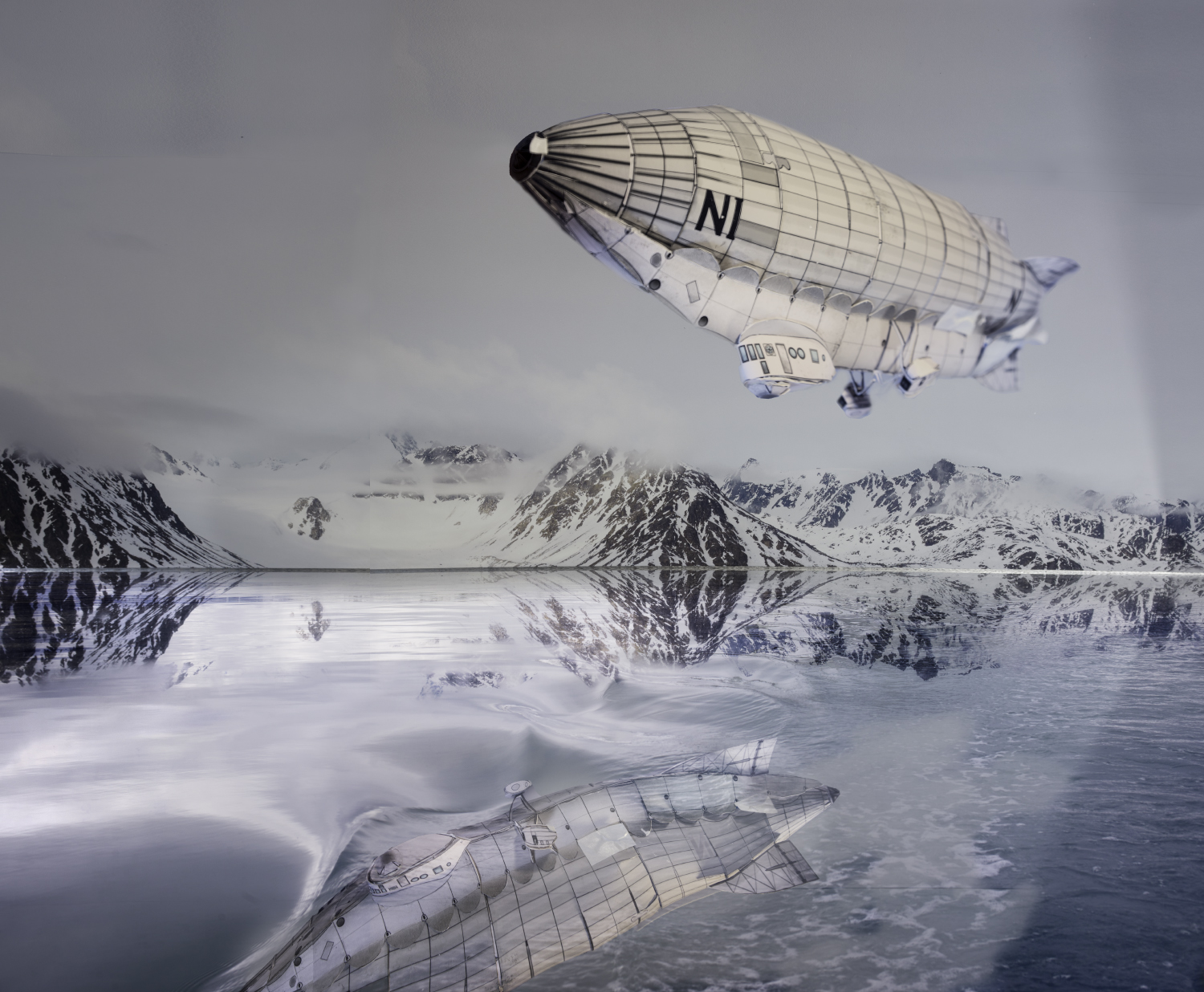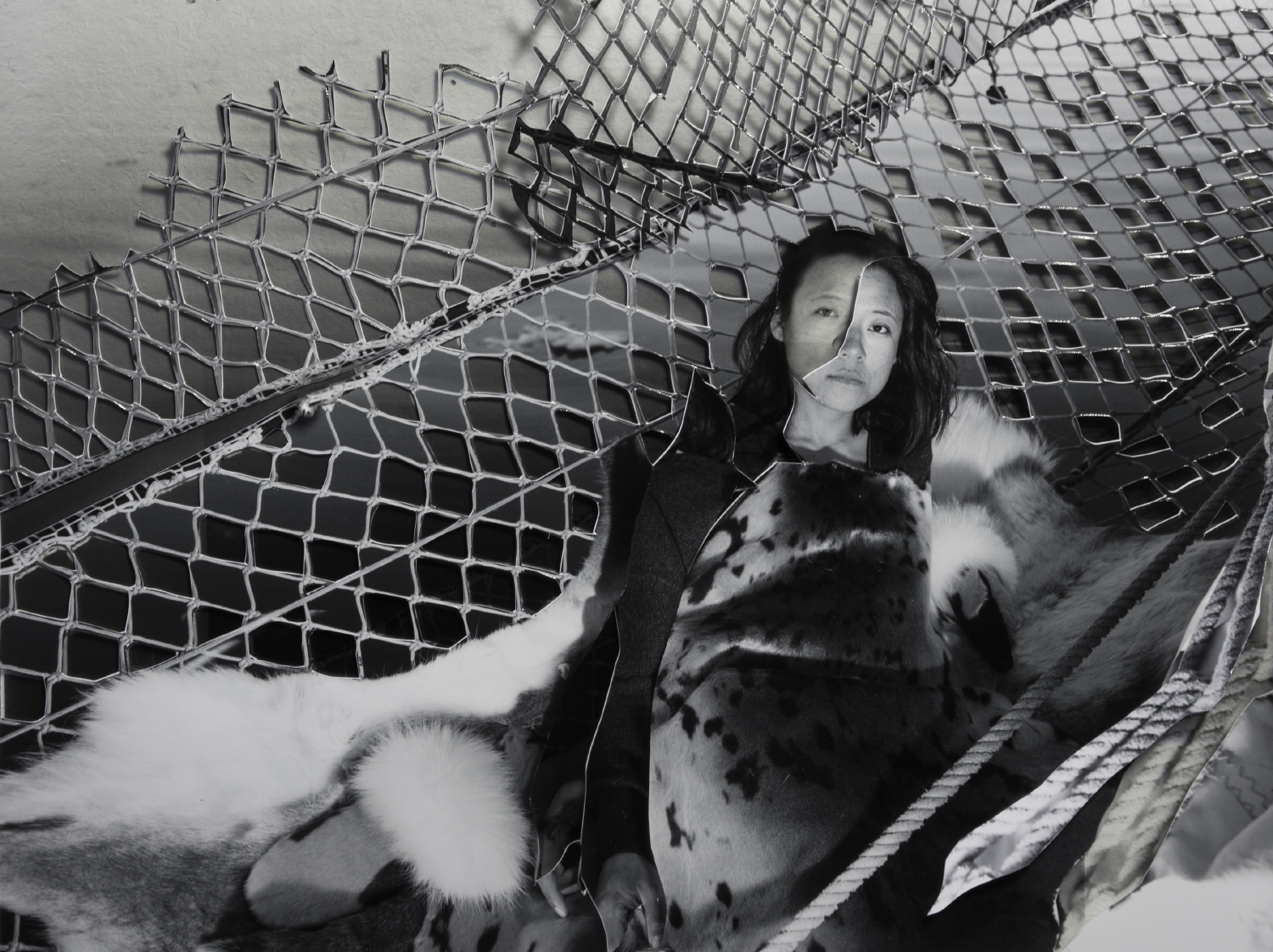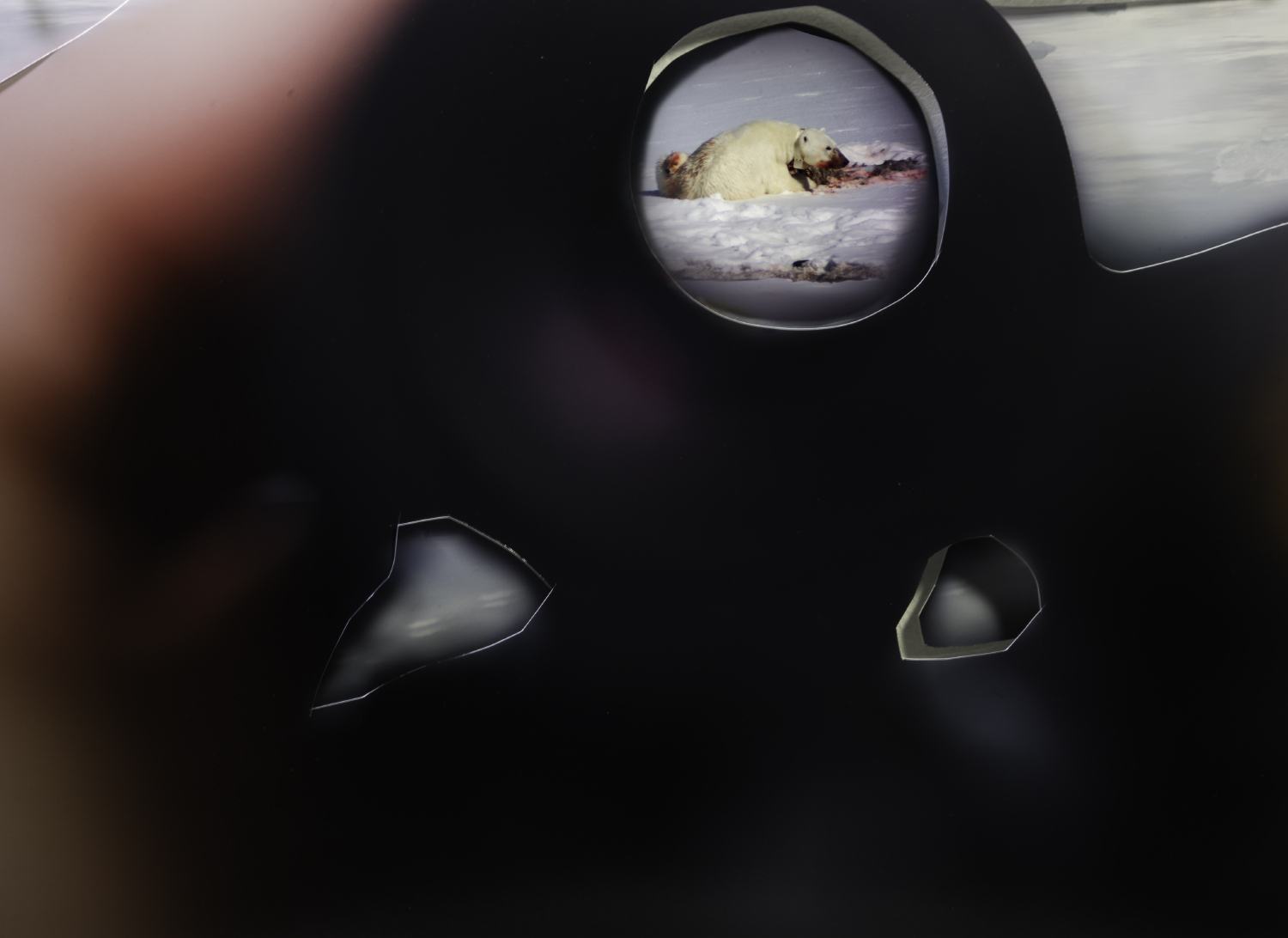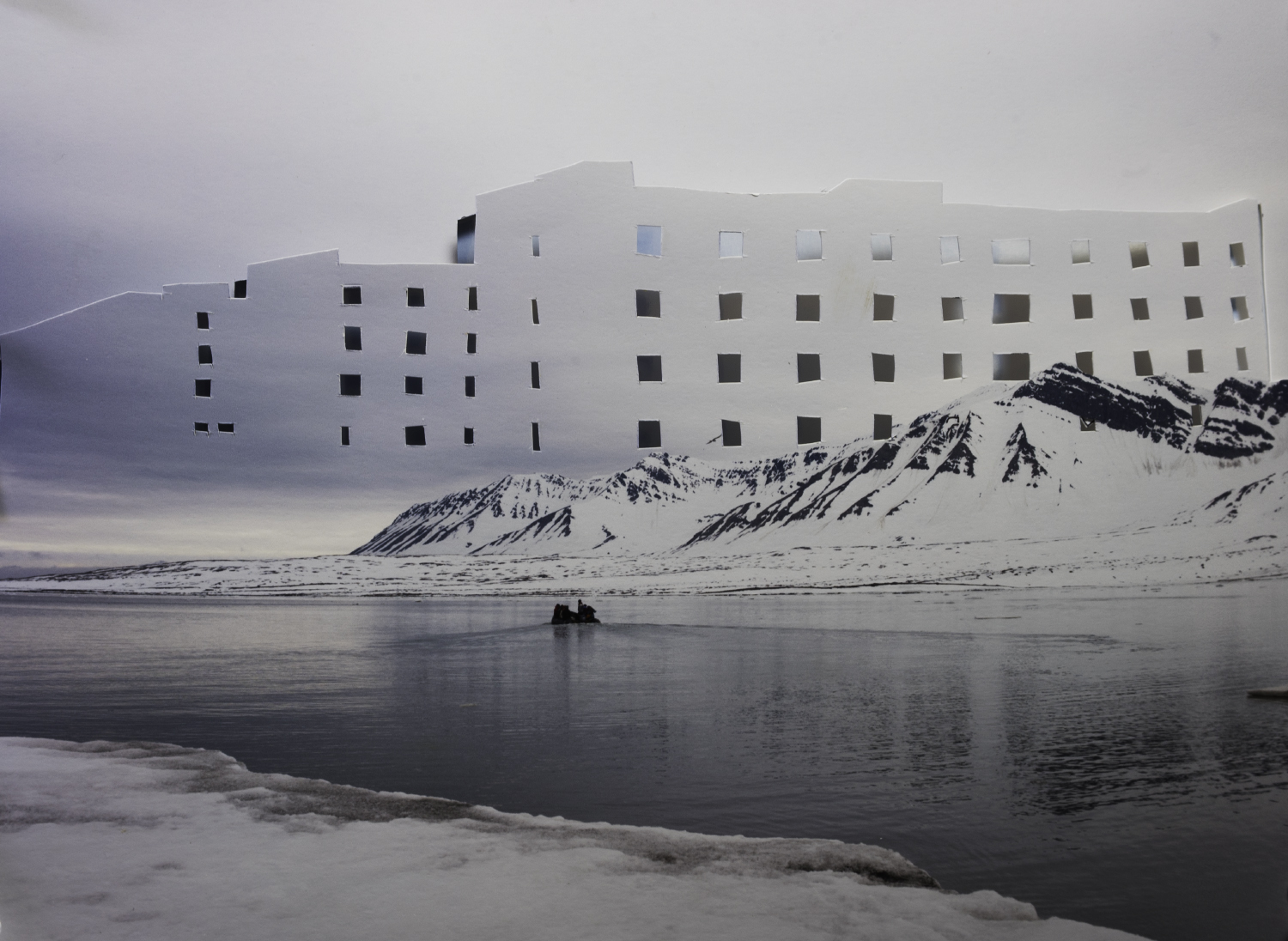Works in Progress by: Sadie Wechsler
Written by: Ryan Nemeth
Sadie Wechsler received her BA from Bard College and her MFA in photography from the Yale School of Art. Her photographs have been exhibited across the United States, including at Aperture Gallery, New York; Johalla Projects, Chicago; and Green Hall, New Haven, Connecticut. In 2006, she was a recipient of Bard College’s Delavan Grant. Recently, she was the recipient of the 2014 Aperture Portfolio Prize and last year she was awarded and participated in the 2015 Arctic Circle residency.
Sadie was born and raised in Seattle, Washington, where she currently resides. In responding to a general question about what inspires her, Sadie tells me that she is heavily influenced by the volcanic landscapes and shifting tectonic plates that encompass the Northwest of America and the rest of the Pacific Rim. Many themes found in her work explore unreliable, shifting and extreme environments in different forms and iterations. You will see these themes in Sadie’s most recent work as she has graciously agreed to share her works in progress from her recent Arctic Circle residency trip. Additionally, I had the chance to catch up with Sadie for an interview and this is what she had to say:
Ryan: You completed your BFA from Bard, where Stephen Shore has long been at the helm of the photography program. In addition, you finished an MFA at Yale, where Gregory Crewdson chairs the program. These are arguably two of the best photography programs in the country. Tell me more about your experience in academia. Could you briefly sum up how these programs shaped and molded your understanding of photography?
Sadie: In the end, school and education are amazing privileges but become things to forget about. They are in you and the experience stays, but it also becomes something to work against. In school things are absolutes, things have guidelines and forms that need to be met in making work. I have found life and enjoyment in breaking this need for certainty. The most important thing I received from my education was the idea of the critique, the ability to question and frame my thinking about work, specifically my own work. For a long time, it was very hard for me to know how to respond to what I made. This is still and will always be a challenge, but I have a better awareness for it now and this feels very powerful. The other powerful thing I gained from my education is an amazing group of friends whose opinions I can rely on. These people are the other most viable tool which my education afforded me. Sometimes, I think about what Zen Master Linji said, “If you meet the Buddha, kill him.” To me, this means if things start to feel resolved, understood and familiar, it is time to push hard in the opposite direction.
Ryan: In viewing your work, you depart from the traditional photographic practice of working within the confines of a tightly themed series of work. Thus, you give much more weight and consideration to individual photos that work tangentially around larger themes. How did this practice evolve, was this a conscious break from the norm or just a function of the way that you naturally work?
Sadie: I think this practice came from a desire for each decision to fulfill the need of each individual image, not the needs of a larger body of work. To clarify, I think of each image as an equation to solve and each equation will have its own unique answer. The answer may not be related to the way the last problem was solved. Each image should be resolved for itself and then, once done, can enter a group of other work. This practice started as a way to make better photographs. I was struggling and was not interested in anything I was making and finally I realized that I need to abandon the dignity of composure and accept a chaotic search for the perfect image. This has to do with trying to release all of my brain’s filters and barriers in making and creating each work as a testament to the equity of thought.
Ryan: As you know, there is an old and seemingly never ending conversation about manipulated and composited images in photography. It is interesting that this conversation still exists as we know that the first manipulated negative came about in 1846, just five years after Talbot patented the Calotype negative. I believe that image manipulation can be a very powerful tool in conveying metaphor and developing psychological weight in a photograph. Your images seem to hold form somewhere between reality and intentional contrived fakery. Thus, you are utilizing image manipulation as an expressive tool, why produce images of landscape in this manner?
Sadie: First I would say that the landscape has always been very fertile ground for fakery. The framing out of undesirable elements to present a land desirable for development. Also the earth itself is a manipulator of landscape. Lava flows cover old ones, burn fields, houses and force a changed ecosystem. We also live in a place of earthquakes and tsunamis. These are some of the most fundamental shapers of the land with their forceful touch. From this perspective, the most honest way of addressing the land is to embody its most elemental force of manipulation. It is easy to slip into a way of thinking that sees humans as the main force changing our land, but that would be to forget and underestimate the acts of total transformation which are native to the planet.
Ryan: You recently took part in a 2015 Arctic Circle residency program where you explored the arctic via a ship that departed from Svalbard, Norway. What did you see and what did you take away from this experience?
Sadie: I am still trying to figure this out. It is hard to really see when your eyes are so bombarded with constant newness. It felt like a dream, a place where I was just trying to be a receptacle, taking in all of the stimuli. Svalbard is a magical place, a place sought after, pillaged and pillaged again. Unlike most of the arctic, it rests the closest to the north pole and it does not have a native population. This is a place people went to die and kill and they sought greatness and fame; some even achieved it. This is also a place where some of the most amazing people I have ever met live today. They treasure the dark winter as it is a unique resource. I would say the best thing this opportunity gave me is the curiosity to learn more. It also gave me the first question to ask and the beginning of a strategy to enact when I go back.
Ryan: I catch overtones of environmental messaging in your work, should we be concerned about the state of our environment and do you think visual art can be used as a tool to change the situation?
Sadie: Of course we should be concerned! It was in the 70’s on Christmas on the East Coast, this is alarming! We have been in luck here this winter in the Northwest as things are pretty normal relative to the rest of the country; lots of snow in the mountains, in the 40’s, but heavier rain… The subject of environment is something I often think about. However, people don't want to sacrifice their lifestyle for the survival of the species; just think about Easter Island. I do think it is important for art to deal in the topics of the time, to raise them in ways the newspapers miss. This is where my world begins; It is not a logical or analytical world and everything may be lost and yet joy can be found.
Ryan: How do your compositions develop? Do you start with an idea or memory and do your images take time to piece together?
Sadie: Yes to all. I start with ideas that mutate over time as memories arise and as they begin to take physical form. Lately, the work has been taking a lot of time, or a lot of revisiting. Creating, moving on to something else, then coming back and seeing where the original piece can move to next. This has been one of the most exciting things about making without deadlines. It feels more natural. Each piece has a slow breath of life as it emerges.
Ryan: Tell me about the use of stock imagery in your photographs, do you use stock photos in all of your work or just some of your work and why?
Sadie: I don’t use stock imagery, but I do take inspiration from it. I feel like sock imagery has become a dictionary of our day. We understand visually now and so it makes perfect sense that we can find an image to represent any experience or how we are supposed act in any situation.
Ryan: Is gear important to you? What kind of gear and camera(s) do you travel with when you are out doing personal work?
Sadie: Yes, but only in the way that I need to know how my camera will function. I have been using a Phase One p45+ with a Phase body for 5 or 6 years now. I also just got a Sony a7rii and I am trying to figure out how to use it and how it captures… I feel like the Phase One is so big and bulky and I would love to replace it but the files and the way it captures landscape and color are so luscious it is hard to give up. None of this matters so much to the end product. These are just the tools I have chosen and know how to use to capture imagery.
Ryan: Do you tend to shoot, store and catalogue lots of images for potential and future use or are you more targeted in the way that you approach your production process?
Sadie: I do a very unorganized version of a catalogue and pull from it constantly for completing work or finding pieces I need. Mostly, I create work from specific groups of images that are made within the same trip or time period. But every once in awhile, I am looking for a specific color, texture, or vista and I will dig through older catalogs. I reuse the same images in different ways throughout time. They feel familiar, like I can use them more adeptly.
Ryan: Name a couple of contemporary landscape photographers that are interesting to you and why do you find their work interesting?
Sadie: I am interested in postcards, I collect beautiful landscape postcards. I especially love the lenticular lenses and the ones with glitter on them. There are not so many good ones out there, so when you find one it is a real treat and honor. These to me are a reaffirming mode of seeing the world and a tried and true way for photographers to alter and exaggerate the land around them as well as for people to consume it. This feels very natural to the way we have been visualizing the west and other mythological places for a long time.
Ryan: Thanks so much for taking the time Sadie, I have learned a bunch!
You can find Sadie Wechler’s work here: http://www.sadiewechsler.com
















